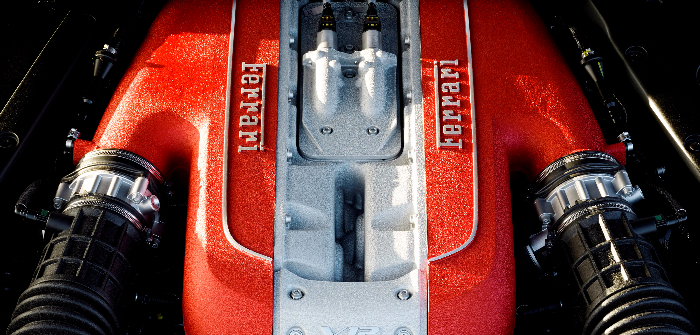At the 2017 Geneva Motor Show, Ferrari unveiled its most powerful road-going engine to date, in a new variation of its V12. An increase in swept capacity to 6.5-liters has yielded an overall output of 790hp, and a specific output of 121hp/l, whilst also cutting fuel consumption and emissions in comparison to the F12berlinetta’s V12 unit.
During development, Ferrari’s engineers set themselves the goal of exceeding the specific power output of the F12berlinetta’s V12, and focused their efforts on optimising the engine’s intake system, and combustion efficiency to fully exploit the increase in displacement.
The engine also introduces several innovations, such as the use of a 350-bar direct-injection system for the very first time on a spark-ignition engine, and a revised control system for the variable geometry inlet tracts, which was developed on the pre-2014, naturally-aspirated F1 engines. The high pressure injection system also improves nebulisation of the injected fuel, reducing the the amount of particulates emitted when the catalytic converter is warming up.
The engine’s maximum power-to-fuel consumption ratio has also been improved, attesting to the engine’s exceptional efficiency in urban driving contexts. This was achieved in part as a result of ‘Stop&Start On the Move’ strategies which cut and restart the engine while the car is moving.
The result of all these developments is a boost in maximum power output to 788hp at 8,500rpm (a 60hp increase over the F12berlinetta) and maximum torque of 718Nm at 7,000rpm. Ferrari states that 80% of maximum torque is available at just 3,500rpm. The shape of the power curve, which rises constantly all the way to the maximum revs of 8,500rpm.
The 812 Superfast is fitted with Ferrari’s F1 dual-clutch transmission which has been further evolved to meet the car’s track driving performance targets and cope with the boost in maximum revs to 8,900rpm. The gear ratios on all of the gears have been shortened by an average of 6% to exploit the extra performance and higher revs to the fullest as well as to improve the car’s acceleration without compromising pick-up in higher gears. In both up- and down-shifts, the transition time has been reduced by 30%.


